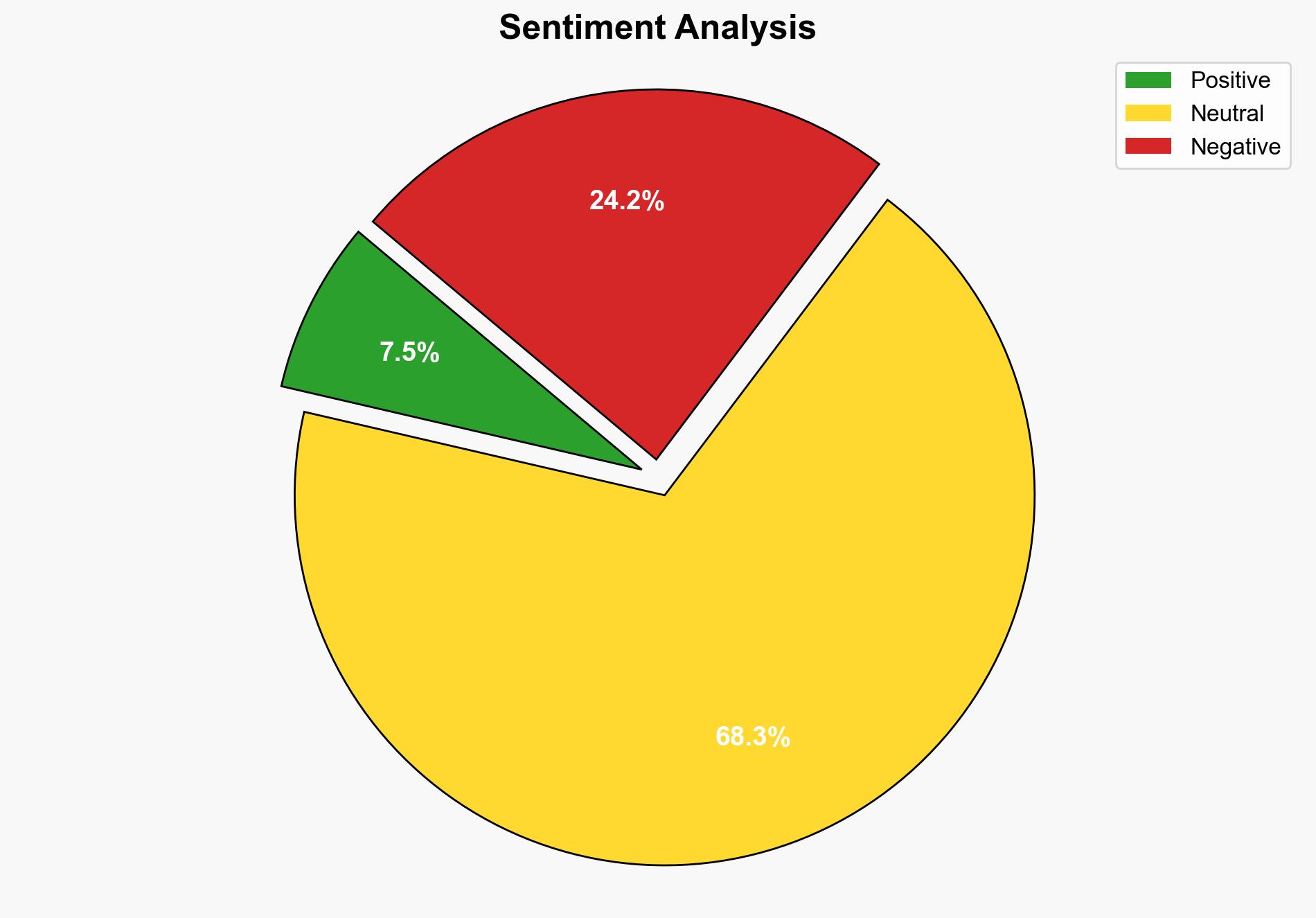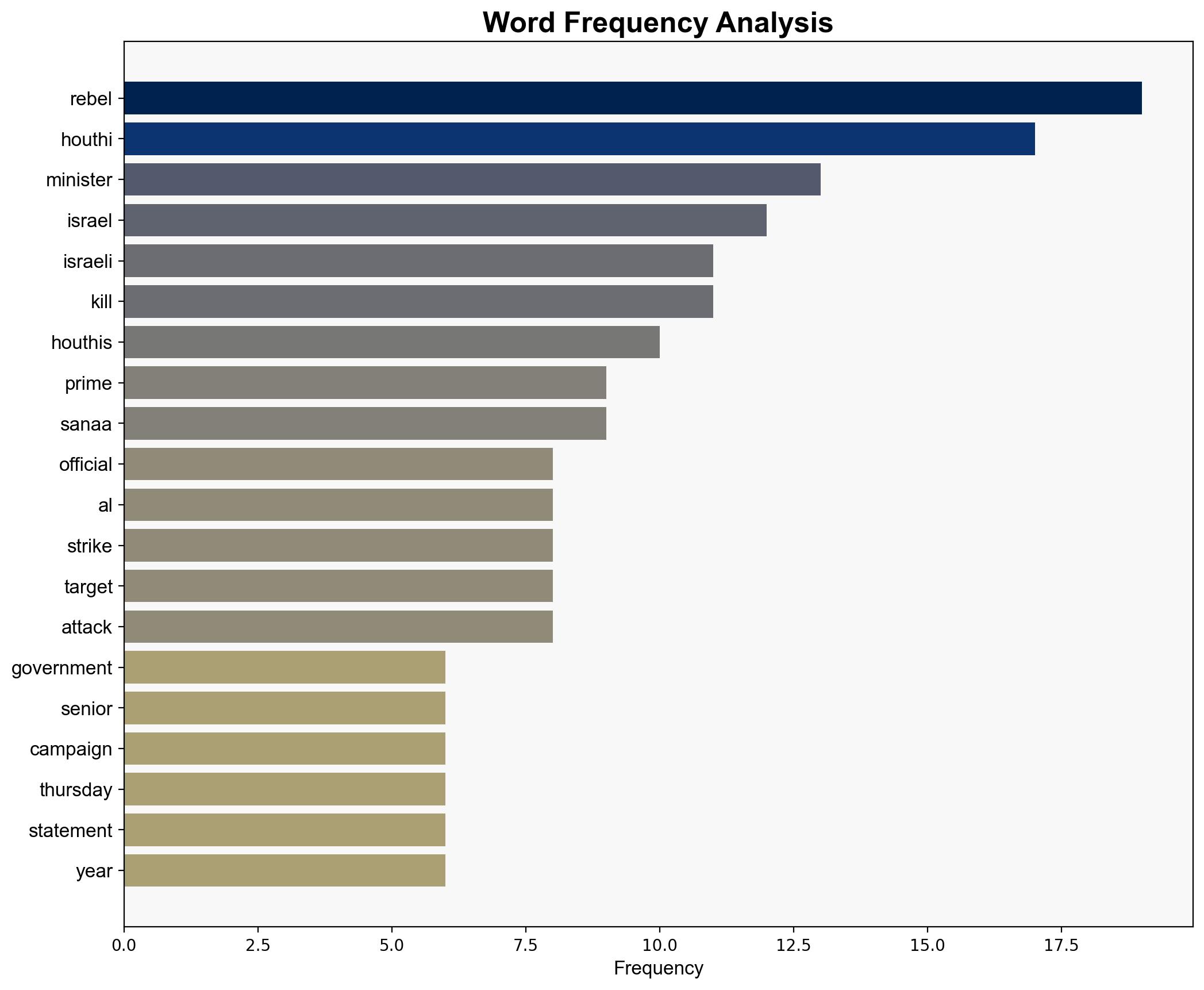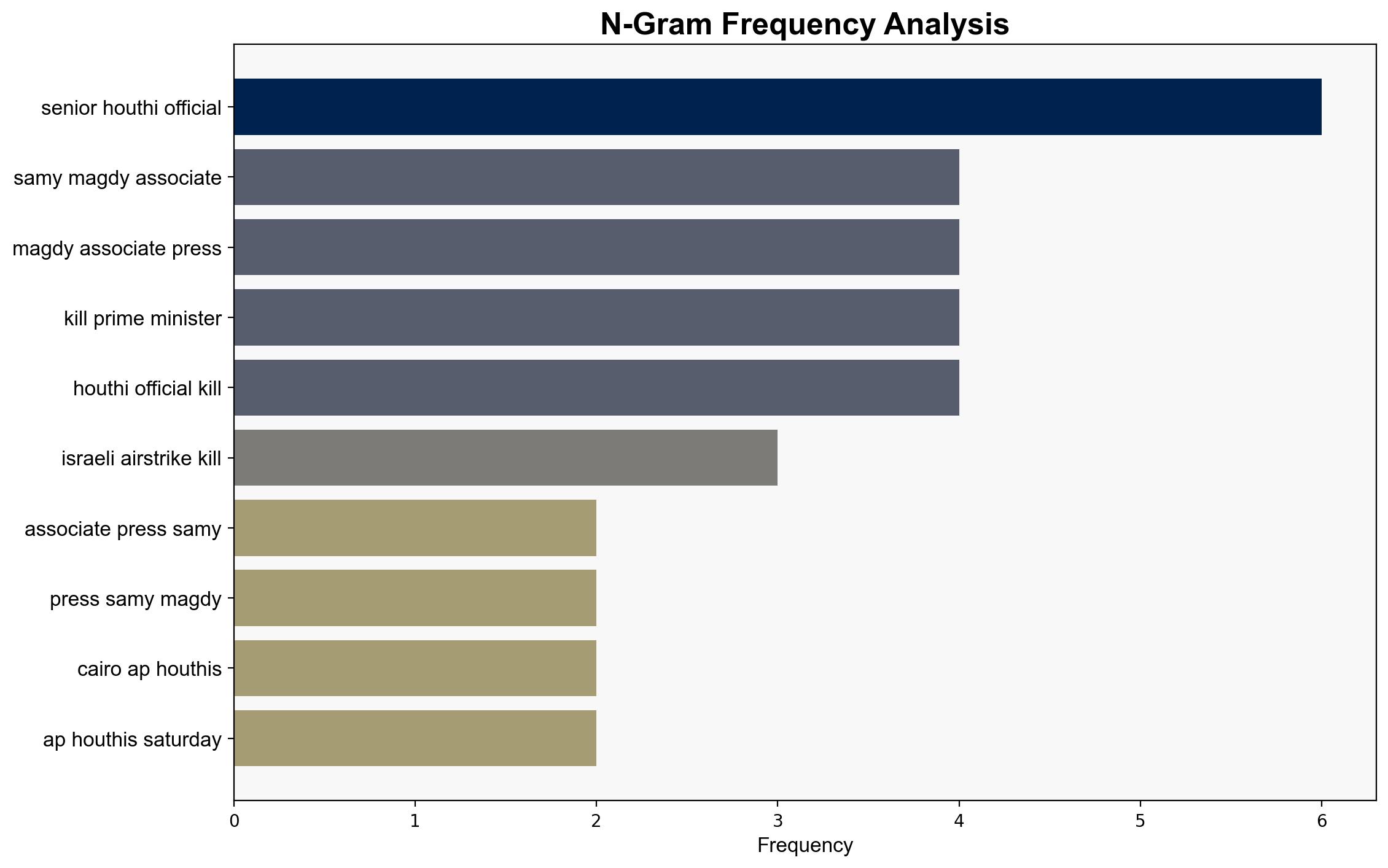Israeli airstrike killed Houthi prime minister in Sanaa rebel group confirms – PBS
Published on: 2025-08-30
Intelligence Report: Israeli airstrike killed Houthi prime minister in Sanaa rebel group confirms – PBS
1. BLUF (Bottom Line Up Front)
The most supported hypothesis is that the Israeli airstrike was a targeted response to recent Houthi actions against Israel, specifically the use of cluster munitions. Confidence in this hypothesis is moderate due to the complexity of regional dynamics and potential misinformation. Recommended action includes increased monitoring of Houthi activities and Israeli military responses to anticipate further escalations.
2. Competing Hypotheses
1. **Hypothesis A**: The Israeli airstrike was a direct retaliation for the Houthi’s recent missile and drone attacks on Israeli ships in the Red Sea, aiming to disrupt Houthi military capabilities and deter future aggression.
2. **Hypothesis B**: The airstrike was part of a broader Israeli strategy to weaken Iranian influence in Yemen by targeting key Houthi leaders, thereby indirectly impacting Iran’s regional power projection.
Using Analysis of Competing Hypotheses (ACH), Hypothesis A is better supported due to the timing of the airstrike following the Houthi attacks and the specific targeting of military figures rather than broader infrastructure or civilian areas.
3. Key Assumptions and Red Flags
– **Assumptions**: It is assumed that the Houthi confirmation of the airstrike is accurate and not part of a disinformation campaign. Another assumption is that Israel’s military actions are primarily defensive rather than preemptive.
– **Red Flags**: The lack of independent verification of the airstrike details and casualty figures raises concerns about potential misinformation. Additionally, the absence of Israeli official statements on the strategic objectives of the airstrike could indicate operational secrecy or strategic ambiguity.
4. Implications and Strategic Risks
The airstrike could lead to increased hostilities between Israel and Houthi forces, potentially drawing in regional allies and escalating into broader conflict. This situation also risks disrupting Red Sea shipping lanes, impacting global trade. The psychological impact on regional populations could fuel further radicalization and recruitment into extremist groups.
5. Recommendations and Outlook
- Enhance intelligence-sharing with regional allies to improve situational awareness and response coordination.
- Prepare contingency plans for potential disruptions in Red Sea shipping routes.
- Scenario Projections:
- **Best Case**: De-escalation through diplomatic channels, leading to a ceasefire agreement.
- **Worst Case**: Escalation into a regional conflict involving multiple state and non-state actors.
- **Most Likely**: Continued tit-for-tat military engagements with periodic escalations.
6. Key Individuals and Entities
– Ahmed al-Rahawi: Confirmed killed in the airstrike.
– Abdul-Malik al-Houthi: Leader of the Houthi rebel group.
7. Thematic Tags
national security threats, regional focus, counter-terrorism, geopolitical dynamics





